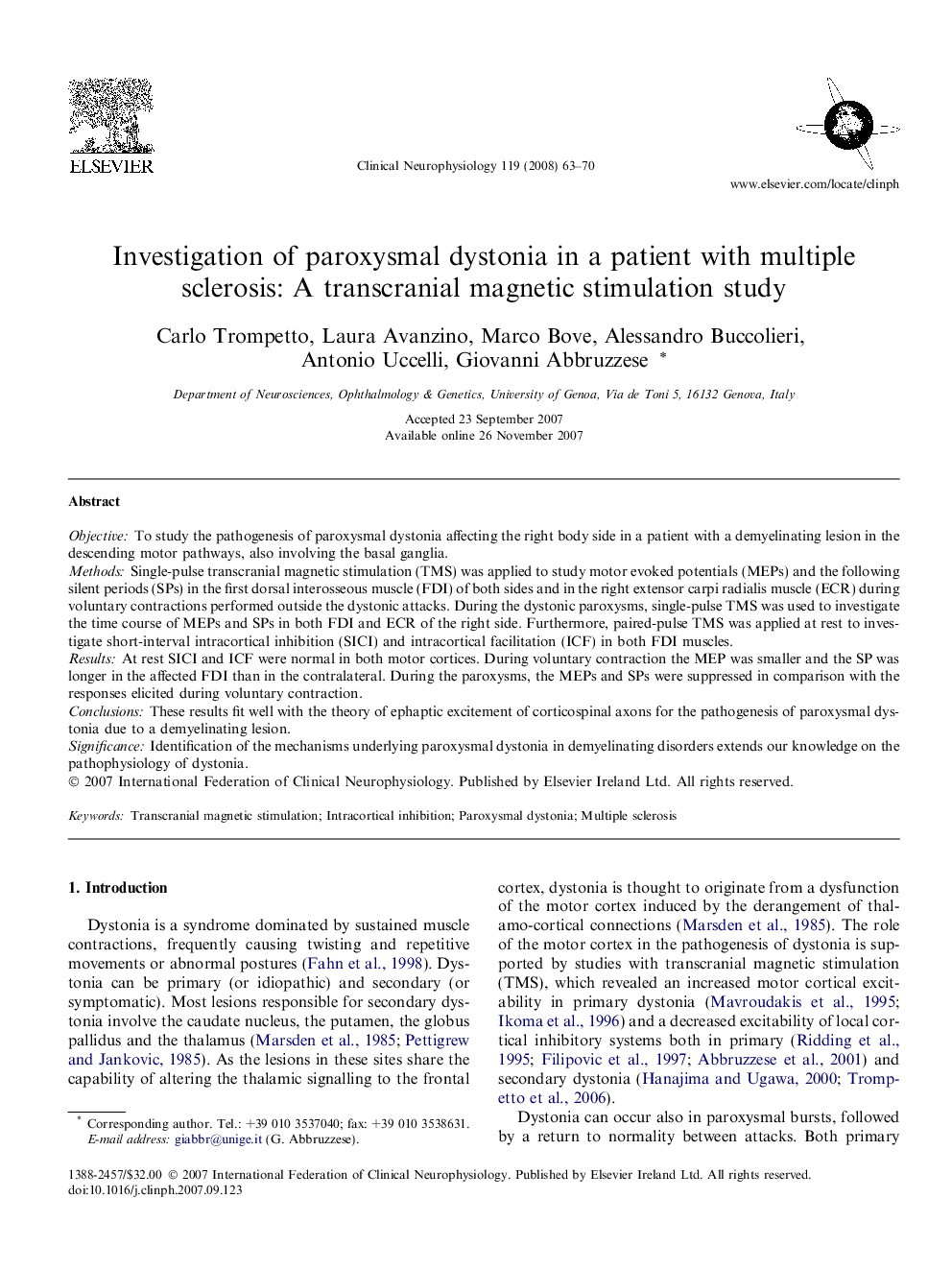| Article ID | Journal | Published Year | Pages | File Type |
|---|---|---|---|---|
| 3047042 | Clinical Neurophysiology | 2008 | 8 Pages |
ObjectiveTo study the pathogenesis of paroxysmal dystonia affecting the right body side in a patient with a demyelinating lesion in the descending motor pathways, also involving the basal ganglia.MethodsSingle-pulse transcranial magnetic stimulation (TMS) was applied to study motor evoked potentials (MEPs) and the following silent periods (SPs) in the first dorsal interosseous muscle (FDI) of both sides and in the right extensor carpi radialis muscle (ECR) during voluntary contractions performed outside the dystonic attacks. During the dystonic paroxysms, single-pulse TMS was used to investigate the time course of MEPs and SPs in both FDI and ECR of the right side. Furthermore, paired-pulse TMS was applied at rest to investigate short-interval intracortical inhibition (SICI) and intracortical facilitation (ICF) in both FDI muscles.ResultsAt rest SICI and ICF were normal in both motor cortices. During voluntary contraction the MEP was smaller and the SP was longer in the affected FDI than in the contralateral. During the paroxysms, the MEPs and SPs were suppressed in comparison with the responses elicited during voluntary contraction.ConclusionsThese results fit well with the theory of ephaptic excitement of corticospinal axons for the pathogenesis of paroxysmal dystonia due to a demyelinating lesion.SignificanceIdentification of the mechanisms underlying paroxysmal dystonia in demyelinating disorders extends our knowledge on the pathophysiology of dystonia.
